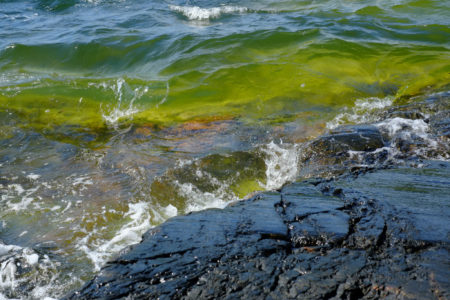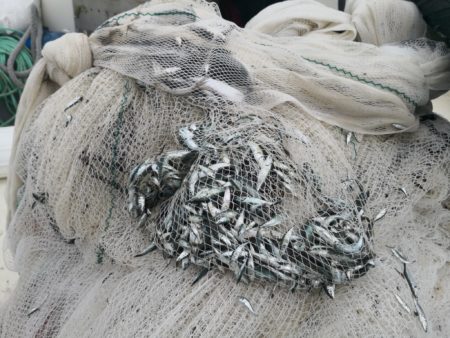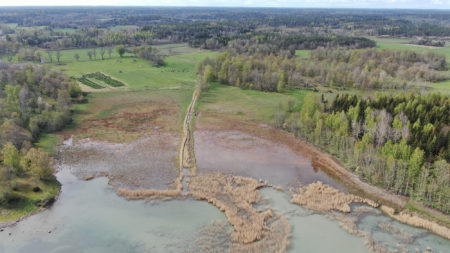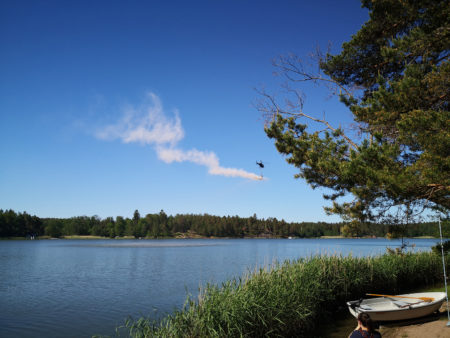About the project
Introduction and background
The most large-scale problem of the Baltic Sea is eutrophication. While we have been successful in cutting the nutrient load coming from the land, nutrients that are stored in the seabed slow down the recovery of the Sea. During the years 2018–2021 the SEABASED Project (Seabased Measures in Baltic Sea Nutrient Management) assessed measures that improve the status of a marine area by reducing the internal load of the sea. The project piloted selected measures in the pilot areas in Finland, Åland and Sweden. The project ended in end of May 2021.
The goal of the SEABASED Project (Seabased Measures in Baltic Sea Nutrient Management) was to reduce the consequences of eutrophication in the Baltic Sea. The project assessed measures that seek to improve the status of the marine area by reducing the internal load of the sea. Some of the measures also supported the circular economy by recycling nutrients from the sea to the land. Moreover, the project implemented small-scale pilots on selected measures in the coastal area.
The project was engaged various stakeholders of the society in an open dialogue on the benefits and risks of the measures, and their applicability for the Baltic Sea. The project was led by the John Nurminen Foundation, and the project partners were the Centre for Economic Development, Transport and the Environment for Southwest Finland, Government of Åland, the Åland Fishfarmers’ Association, Stockholm University and County Administrative Board of Östergötland. The total budget for the Project was approximately 2.8 million euros of which the EU Interreg Central Baltic programme is financing approximately 2.1 million euros.
Work packages (=WP) of the project – the project’s achievements
WP Guidelines
WP responsible partner: John Nurminen Foundation
In the WP, Guidelines on sea-based measures were compiled, targeted for authorities and policymakers for assessing, selecting and discussing the possibilities of applying sea-based measures in water protection policy in the Baltic Sea Region. Potential for commercialization and future financing of sea-based measures was evaluated, with an objective to proceed from project based approach in Baltic Sea protection into sustainable long-term financing scheme.
Cross-sectoral discussion within and between countries and different stakeholders were facilitated to achieve comprehensive understanding on sustainability and possibilities of seabased measures, and to enable future integration of the suitable measures into environmental policies in the BSR. Guideline development was a participatory process, engaging target groups and key stakeholders into the discussion via commenting rounds and in workshops and round table discussions. In addition, sustainability assessment produced in WP Sustainability was included in the Guidelines.
The Guidelines were shortly presented in the SEABASED Final Webinar on January 26th, 2021. You can find the presentation behind this link. You can read and download the SEABASED guidelines document from this link.

Picture: Kirsi Kurki-Miettinen
WP Aquatic compensation and water improvement fund
WP responsible partner: The Government of Åland
The main objective of the WP was to develop a concept of ecological compensation in aquatic environments, including a “water improvement fund”, for which Åland will act as “test laboratory”. The concept incorporated pilot measures from the SEABASED project, with an objective to examine different options and needs for new regulations for legislation and to find functional and sustainable solutions e.g. to be utilized in ecosystem-based nutrient compensations in the future.
The WP contained concrete pilot activities to reduce nutrients from the marine environment: Fishing undervalued fish, like stickleback, and removing nutrient-rich waters from two eutrophied semi-closed, coastal bays and testing the possibility of recycling nutrients by utilizing the water for irrigation on fields. Also, complementary measures to increase predatory fish stocks were tested to support ecosystem recovery and, consequently, reduce the internal nutrient load in pilot coastal bays. In addition, results from all project pilot activities were utilized in the concept development work.
The report can be downloaded via this link. The aquatic compensation concept was briefly presented in the SEABASED Final Webinar on January 26th, 2021. You can find the presentation and expert comments behind this link.
Read more about the work package.

Photo: Rosita Broström
WP Sustainability
WP responsible partner: Centre for Economic Development, Transport and the Environment for Southwest Finland
WP Sustainability included thorough sustainability assessments and monitoring of pilot activities taking place in Sweden, Finland and Åland. Based on the results of the environmental assessments, criteria for pilot implementation were set, and preconditions for suitable locations were compiled for future applications of different sea-based measures. Partners representing regional authorities monitored the implementation of pilot activities, and were also responsible for permitting the pilot activities planned. To ensure also the social sustainability of the activities, local communities were involved in pilot implementation from beginning through discussion and local information events. For future applications of piloted measures, the legislative and administrative issues related in implementation of such activities, as well as financial sustainability and potential effects on local livelihoods, were looked into and gathered information are included in the Guidelines.

Photo: County Administrative Board of Östergötland
WP Binding phosphorus into sediment
WP responsible partner: Stockholm University
In the project, three pilot examples with activated limestone (“marl”) application to phosphorus-rich bottom sediments were implemented in coastal bays in Sweden (Östergötland, Stockholm) and Finland (Archipelago Sea). The limestone from Gotland was used in the pilots and was donated to the project by Nordkalk. In Finland the suitability of local limestone residues in Parainen was studied. However, it was not found suitable for the pilot due to composition of the stone and, thus, the Gotland limestone was used in all pilots. The pilot started with a short development phase to define exact amounts of marl/limestone application, after which the measure was implemented. After application, the effects of the measure on phosphorus concentrations as well as on sediments and biota were assessed. This measure was chosen as one of the top 5 innovations and the winners of the Stockholms Innovation prize by the City of Stockholm. Based on the results, a Policy Brief was compiled for activated limestone application as a method for binding phosphorus to bottom sediments in the Baltic Sea region. Read more about the results in the final report of the pilot. Development of the method is planned to be continued also after SEABASED project.

Photo: Kirsi Kurki-Miettinen
WP Sediment removal
WP responsible partner: Centre for Economic Development, Transport and the Environment for Southwest Finland
Removal of organic, oxygen consuming top layer of bottom sediment was planned to be tested at two pilot sites in Finland and the effect and efficiency of the method was to be evaluated. The main objective is to remove nutrients from the seabed, but also to deplete the organic oxygen consumption in the sediment and, consequently, decrease the leakage of phosphorus from anoxic sediment to the watercourse. Implementation of sediment surface layer removal using slow flow technique, or comparable, to avoid sediment resuspension and turbulence, was beyond the SEABASED project budget. Therefore, the project decided to carry out an experiment in a laboratory to study probable effects of sediment removal to sediment oxygen demand and nutrient fluxes between the sediment and the overlying water. The suitability and potential of the measure in Baltic Sea protection was evaluated, especially for coastal anoxic bottom areas that have been historically under high nutrient load, with little possibilities of significant flora or fauna to survive without restoration measures. Read the final report of this pilot behind this link and the study on the incubation of the sediment behind this link (the study is in Finnish).


